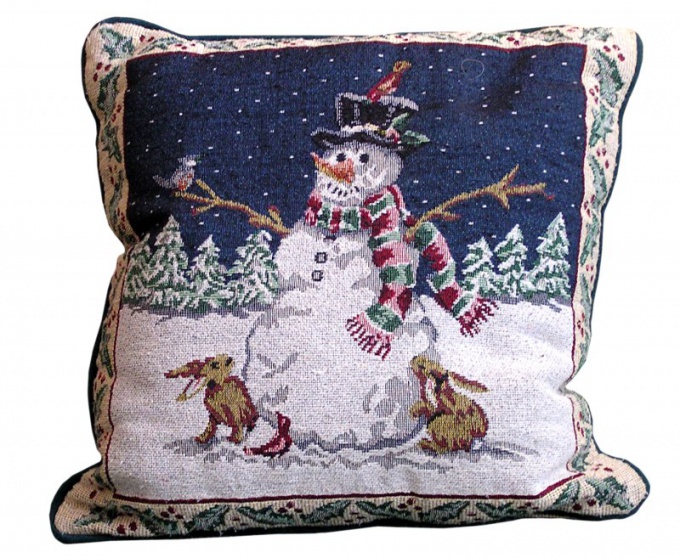You will need
- - cut the working fabric;
- centimeter;
- pencil;
- - scissors;
- - threads;
- needle;
- - sewing machine;
- - optional: ribbon, lace, frill, contrast thread zip.
Instruction
1
Measure the length and width of the pillow. One (lower) detail of a cut should be cut out according to the perimeter of the product. In this case, note that bed linen should be worn on the thing freely, but not to be large. For accurate determination of the size, you should focus on the thickness of the cushion. Usually each edges of a part to leave a margin of freedom to fit from 1.5 to 3 cm. Add to this the standard allowances on the hem and the connecting seams are 1.5 cm.
2
Start the second pattern (upper) part of the future pillow cases. It will be elongated, with a wide hem on top to form the valve. As a sample use ready cut the bottom part of the product; for hems leave a large allowance of cloth from 15 to 30 cm (depending on the fullness of the pillow) and another 1.5 cm for seams.
3
To make cutting the pillowcase to be used as everyday bedding, recommended from the same cloth. This will save the thing from additional scarring in the joints of the sections. Make the necessary calculations and make some rectangle.
4
Fold the cut out detail double face inside, and the top, leave the seam allowance on the valve the desired height. You will only have to process the slices a double Poggibonsi and sew them.
5
To design decorative pillow case made of two details make pattern decorative edge around the perimeter of the side seam. You can also use the finished lace from the store of sewing accessories.
6
If you wish to decorate the product ruffles, cut out to them a strip of cloth. Fold it in half along a longitudinal line and route locking stitching contrast thread close to the top edge. Alternatively, the height of a single layer of ruffles, you can handle the lace braid.
7
Make a pattern ruffles long enough, then the build will turn out lush and elegant. The edging strip should be at least 1.5 times more than the perimeter of the future pillow cases. If necessary, sew the border of several pieces of the working fabric or fabric-companion of the matching colour.
Useful advice
On a practical pillowcase-seat cover on a chair or cushions usually do not valve the hem, and a convenient zipper. Set a place for her, leaving the side seam of the pillowcase open cut, or make a neat incision in the middle of the back of the appliance. Leave allowances of such size that their edges are closed over the clasp. Complete all the stitches on the wrong side of the pillowcase, then finished thing you can easily turn out through the open zipper.
